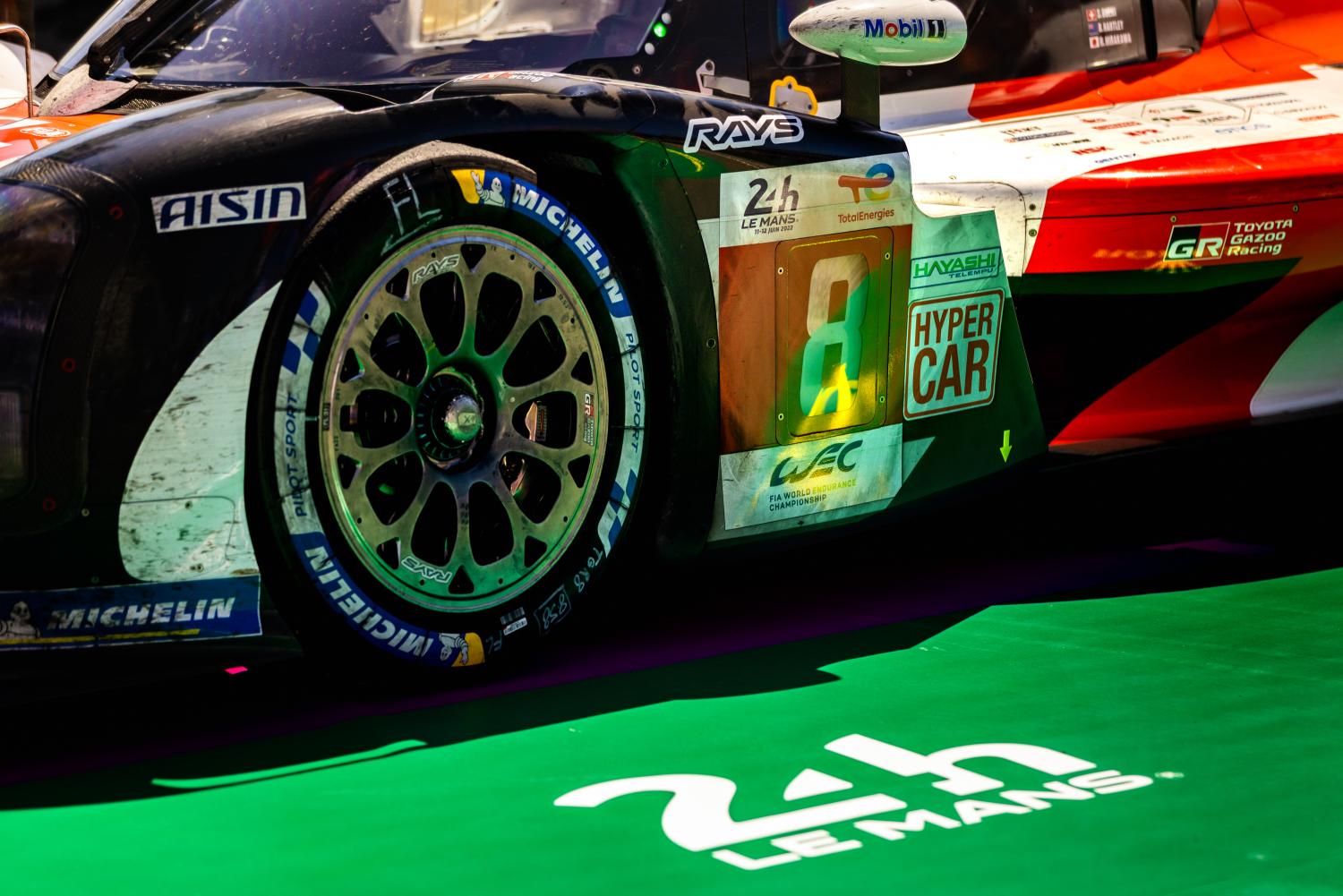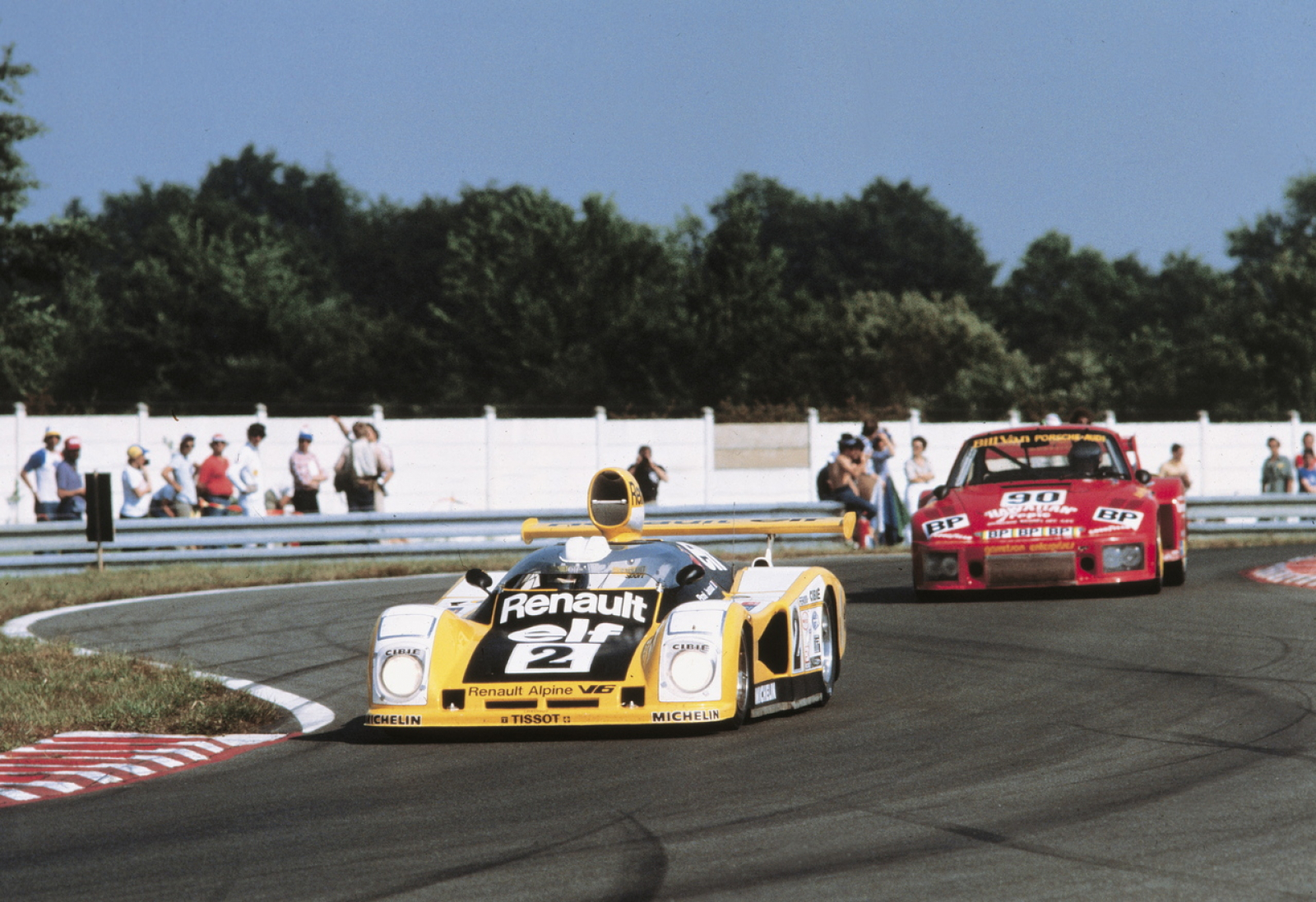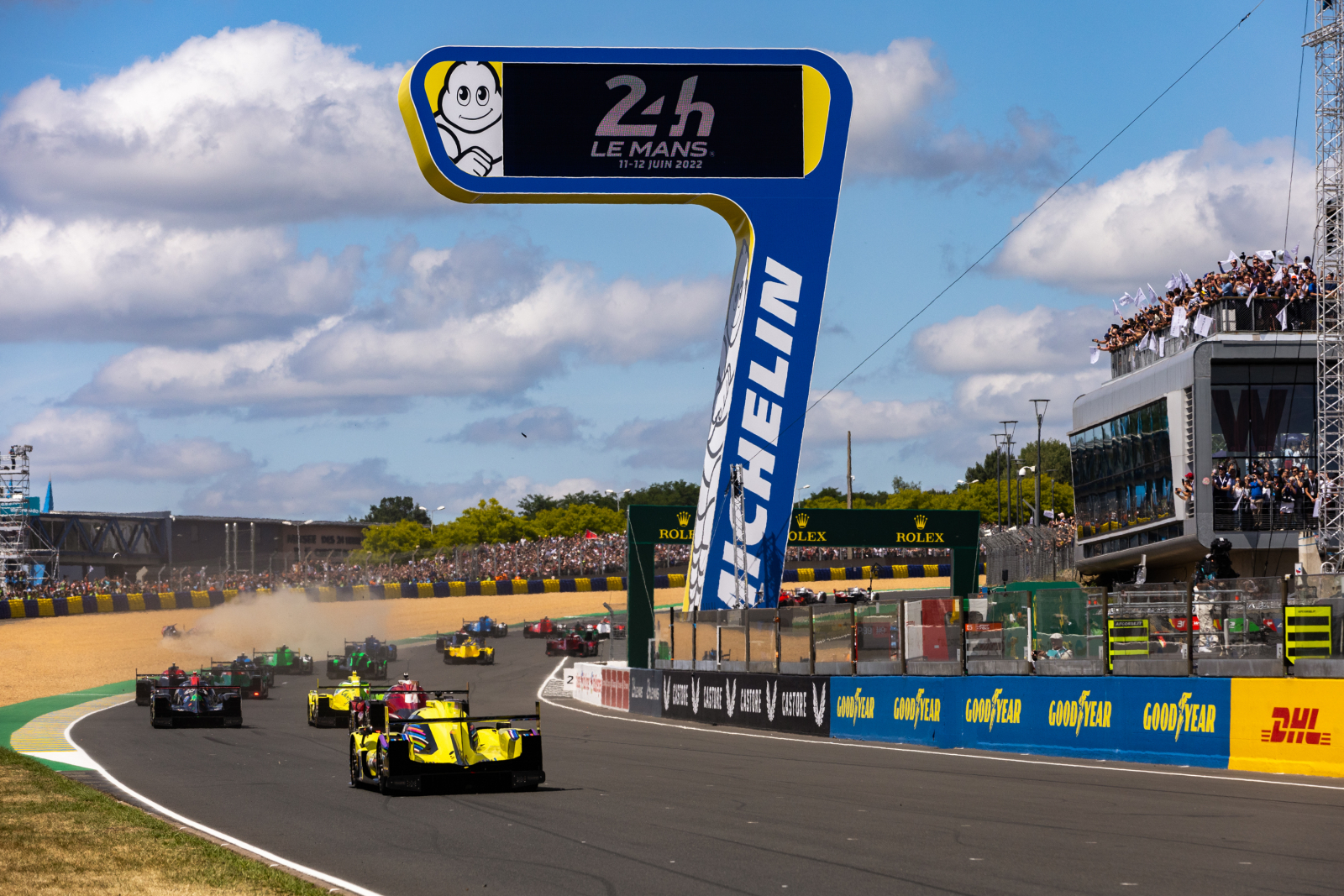24 HOURS CENTENARY – PERPETUAL INNOVATION ⎮ Undefeated at the race since 1998 and sole tyre supplier in the Hypercar class, Michelin's 31 wins are now just under the record 34 set by Dunlop in the early 1990s. This is a story of supremacy that few other manufacturers have succeeded in disrupting.
From the outset in 1923, tyres have been a crucial element of the 24 Hours of Le Mans. They provide cars with the perfect level of grip regardless of weather conditions, and meet two seemingly contradictory criteria: performance and endurance.
Tyre manufacturers, like other companies, ensure longevity through marketing. Competition is an obvious means to that end. For the British Dunlop and Avon, the French Michelin, the Italian Pirelli, the German Continental, the Belgian Englebert, and the American Goodyear and Firestone, an international race like the 24 Hours is an excellent showcase in the event of victory. As the Americans say: win on Sunday, sales on Monday.
So, the rivalry between manufacturers is fierce. A good tyre on a bad car won't make it win, but a bad tyre on a good car could actually cause it to lose.
Le Mans | Michelin and Dunlop's playing field
Founded at the end of the 19th century, Dunlop and Michelin, both family businesses, were the main tyre suppliers in Europe thanks to their technological superiority.
Michelin won the very first running of the 24 Hours in 1923 with French marque Lorraine Dietrich. It would be the tyre supplier's only pre-war win.
Dunlop then took up the mantle with an inital string of eight victories between 1924 and 1931 – including five for Bentley – and four more from 1935 to 1939, firmly placing it as the one to beat at Le Mans. Only Belgian marque Englebert interrupted the series with three wins between 1932 and 1934. During that period, Michelin considered car racing too expensive and not serious enough for involvement.
At the race's post-war return in 1949, Englebert won again, with the Ferrari 166 MM. But Dunlop quickly reclaimed its position with six victories in the 1950s, then five more in the first half of the 1960s, leaving only crumbs for rivals Englebert (1958), Pirelli (1954), Continental (1952) and Avon (1959).
Goodyear and Firestone | The Americans hit the track
The ferocious duel between Ford and Ferrari brought American manufacturers to the 24 Hours, with Goodyear making its mark in 1965 (for a Ferrari), 1966 and 1967 (for the Ford Mk IIs and Mk IVs). Firestone equipped the inimitable GT40 Gulfs entered by John Wyer in 1968 and 1969, and the Porsche 917 Martini in 1971. Goodyear triumphed again in 1970, then in 1972 and 1976 (Matra, Mirage, Porsche) before more or less officially ending its involvement.
Competition tyres changed drastically in the late 1960s and early 1970s. Carmakers were focused primarily on finding optimal grip, studying bodywork, chassis, suspensions...and of course, tyres. Their width was increased, especially at the rear to pass more and more power to the ground. Treads were eliminated, eventually leading to slick tyres for dry roads, and then returned for wet conditions. For improved cornering efficiency, the sidewall height was decreased. The casings were more rigid and the types of rubber increasingly soft, resulting in more tyre changes during the race. To improve aerodynamics, the diameter of the rims was reduced to 13 inches, then brought back up to 15 or 16 inches to provide more room for the brakes in the rims.
Michelin's radial tyre takes over
In 1975, under the impetus of legendary sporting director Pierre Dupasquier, and counting on the structural advantage of its radial tyre, Michelin decided to return to racing. The French marque accompanied the progress of the Renault-Alpines, first in 2-litre prototypes, then with the A442 turbo. The radial tyre's first win in 1978 was a turning point, proving the technology represented the future, and so competitors gradually followed suit. Renault's move to Formula 1 in 1977, then a partnership with Ferrari in 1978, redirected Michelin towards that discipline.
Once again, the field was left open for Dunlop. The company became a firm partner of Porsche's programme, from the 936 to the 962 C by way of the 956, earning a staggering 10 wins between 1977 and 1987 with Group 6 and unforgettable Group C prototypes. Only the Rondeau driven by Rondeau/Jaussaud allowed Goodyear to interrupt the series with a single victory in 1980.
At the end of the 1980s, Michelin re-emerged, joining the Sauber-Mercedes programme (originally under the name Kouros, then Sauber and lastly Mercedes) and reaching the top step on the podium in 1989, not without its fair share of challenges like tyres bursting under the enormous pressure of the ground effect of those cars in the preparatory years.
Goodyear having also returned to competition, a contentious battle of three unfolded between 1989 and 1999. Michelin won five times, Goodyear four and Dunlop once. The McLaren F1 GTR's victory in 1995 was facilitated by Michelin's new rain tyres that clearly outperformed its competitors.
Michelin and Dunlop | Evolution in involvement
Audi chose Michelin in 1999 as tyre supplier for its participation in endurance races and the 24 Hours of Le Mans. Together, they claimed almost every top step on the podium from 2000 to 2014, leaving only 2003 and 2009 to Bentley and Peugeot, respectively, before the reign of Porsche then Toyota began in 2015. No serious contender for the overall win equipped its cars with anything but Michelin, though a duel continued among private teams in the LMP2 class between the French marque and Dunlop. Marketing strategy saw Dunlop withdraw from racing in Europe in favour of Goodyear, and now the two manufacturers are owned by the same company. Since the arrival of the Hypercars, regulations have imposed a single tyre supplier per class, with Michelin selected for the Hypercars and Goodyear for the LMP2s.
In terms of marque visibility, Dunlop achieved a great historic coup for the very first race in 1923 when it proposed the installation of a footbridge bearing its name to allow spectators to move from one side of the track to the next. Advertising was then banned for some 20 years, including on the footbridge. But, in 1949, Dunlop rebuilt a gigantic 18 m long steel and wood bridge at the start of the curve, named after the manufacturer, at the pit exit, and the name was also given to the chicane installed in the 1990s.
Michelin was allowed to name the second chicane added in the Mulsanne Straight in 1990, but located in an area prohibited to the public, it has not enjoyed the same fame as the Dunlop footbridge and curve. Not to worry, a huge illuminated Michelin panel partially overhanging the pit straight has been added, displaying the classification of the race in real time.
Michelin is steadily inching toward the record 34 wins set by Dunlop back in 1991, but with 31 so far, the French marque will not be able to dethrone its competitor at the Centenary in June…
PHOTOS (Copyright - ACO/Archives): LE MANS (SARTHE, FRANCE), CIRCUIT DES 24 HEURES, 1924-2022 24 HOURS OF LE MANS. From top to bottom: in 2022, Michelin clinched its 25th consecutive win at the race thanks to Toyota (#8); Dunlop was the tyre supplier for Bentley's (#8) and Jaguar's (#4) winning streaks, here in 1924 and 1956; Michelin's victory with Renault-Alpine (#2) in 1978 was the first for a radial tyre, and Dunlop equipped the Mazda (#55) that secured the first ever win by a Japanese constructor in 1991 (the 34th and last to date for the tyre marque); Dunlop and Michelin figure prominently at the circuit, the first with the iconic footbridge that bears its name, the second with this pit straight panel showing the race classification.







